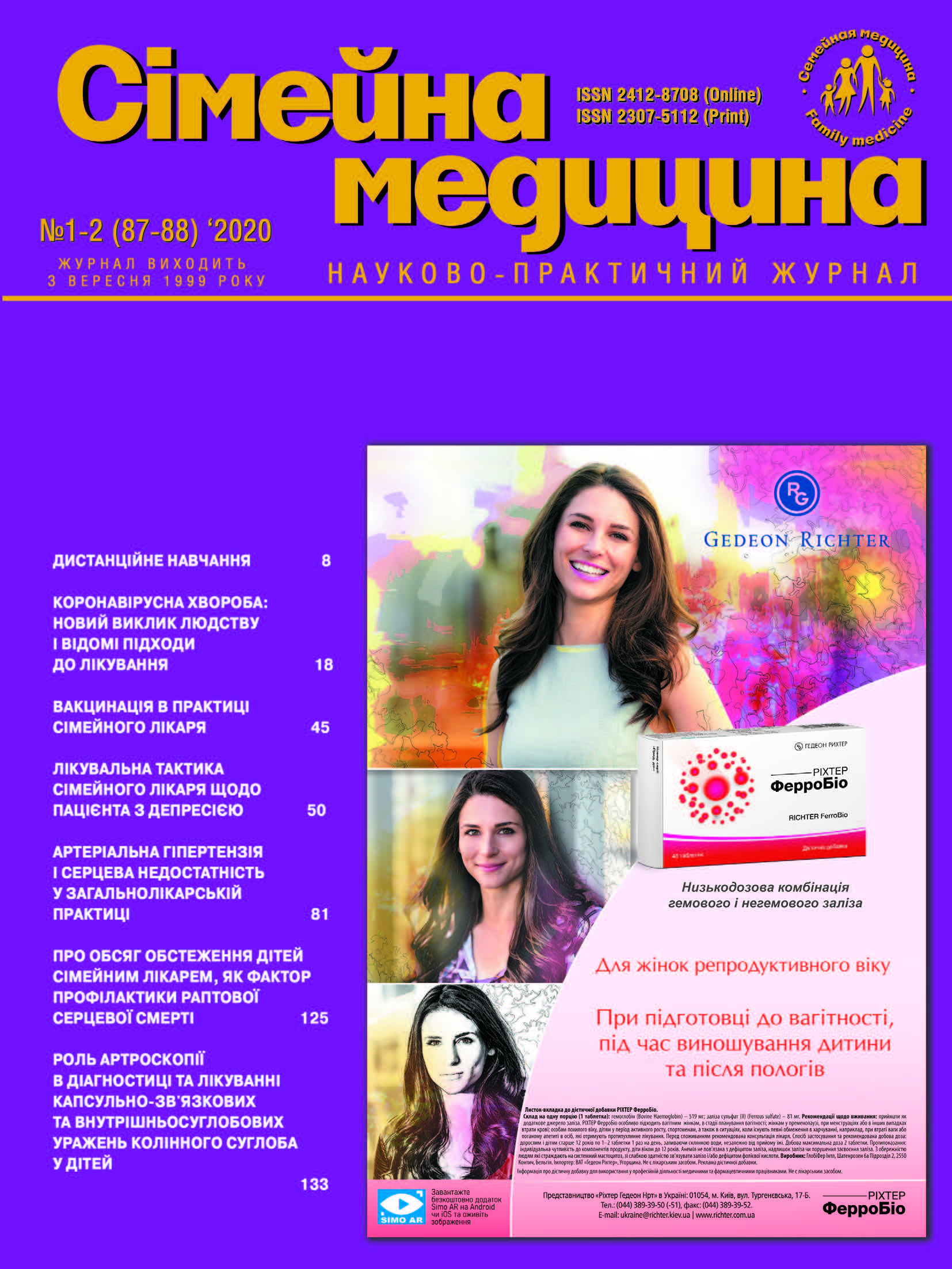Features of Anestheasis in Videothoracoscopic Operating Interventions in Wounded with Battle Chest Injury
##plugins.themes.bootstrap3.article.main##
Abstract
The objective: Improving the results of treatment of the wounded in the chest due to differentiated anesthetic management and the use of video thoracoscopy at II–IV levels of medical care.
Materials and research methods. A retrospective analysis of the results of surgical treatment of 103 victims with a chest trauma in the ATO/JFO area at the II–IV levels of medical care during the period from 2014 to 2019 was performed. Two clinical groups of victims were formed, which are identical in age, sex, traumatogenesis, clinical and nosological structure, severity and nature of injuries. The comparison group included 54 (52.4 %) victims, the main group – 49 (47.6 %). The wounded accounted for 72 (69.9 %), injured – 31 (30.1 %). All the victims were men whose average age was 37.5±1.7 years (23 to 52 years).
Results. In case of combat injuries of the chest, surgical measures are always carried out with the support of anesthetic management. All PTS surgical interventions were performed by us under general anesthesia. Various types and methods of conjugate, combined anesthesia are most often accompanied by intubation of the trachea and mechanical ventilation. One-pulmonary ventilation during PTS surgical interventions for combat injuries and injuries we performed in 36 (69.2 %) cases. The transition from endobronchial to endotracheal intubation during PTS surgical interventions was in 9 (17.3 %) cases. These victims were admitted to the II level of medical care in serious condition with a threat to life (PI<2, PTS=35-48). The transition to normal bipulmonary ventilation during selective ventilation of the lungs was due to the severity of the condition of the victims, which was manifested by a decrease in blood saturation to 85 %.
Conclusions. The developed and implemented differentiated approach of anesthesiological support for surgical treatment of surgical interventions in patients with military injuries and chest injuries made it possible to carry out single-lung ventilation without complications in 36 (69.2 %) cases, differentially approach the type and volume of surgical intervention, which made it possible to achieve reliable hemostasis wounds, aerostasis of the lungs, removal of foreign bodies from the organs of the chest, thorough rehabilitation of the pleural cavity, prevent the development of early and late postoperative complications associated with anesthesia and mechanical ventilation.##plugins.themes.bootstrap3.article.details##

This work is licensed under a Creative Commons Attribution 4.0 International License.
Authors retain the copyright and grant the journal the first publication of original scientific articles under the Creative Commons Attribution 4.0 International License, which allows others to distribute work with acknowledgment of authorship and first publication in this journal.
References
Агаджанян В.В. Факторы, оказывающие влияние на летальность пациентов с политравмой / Политравма. – 2010. – № 3. – С. 5–6.
Плаксин С.А., Черкасов В.А. Оптимизация хирургической тактики при травме груди: соотношение торакоскопии и торакотомии // Вестник хирургии им. И.И. Грекова. – 2011. – № 4 (170). – С. 52–54.
Рутенбург Г.М., Пузанов С.Ю., Богданов Д.Ю., Алишихов А.М. Диагностическая и лечебная торакоскопия при травме грудной клетки // Эндоскопическая хирургия. – 2012. – № 3. – Р. 57–63.
Сигал Е.И., Жестков К.Г., Бурмистров М.В., Пикин О.В. Торакоскопическая хирургия. – М.: Дом книги, 2012. – 352 с.
Эндохирургия при неотложных заболеваниях и травме: руководство под ред. М.Ш. Хубутия, П.А. Ярцева. – М.: ГЭОТАР-Медиа, 2014. – 240 с.
Goodman M., Lewis J., Guitron J., et al. Video-assisted thoracoscopic surgery for acute thoracic trauma. J Emerg Trauma Shock, 6 (2013), pp. 106–109.
Long C. A comparison of the effectiveness of minithoracotomy with simultaneous video-assisted thoracoscopy with open thoracotomy. Chin Med. 2010. Treat 29: 72.
Ma G., Yang J., Liu S. Anesthetic management of bronchial rupture following extraction of a fishbone from the bronchus after 5 months. Paediatr Anaesth 2014; 24: 544-6.
Onat S., Ulku R., Avci A., et al. Urgent thoracotomy for penetrating chest trauma: analysis of 158 patients of a single center // Injury. – 2011. – Vol. 42, № 9. – P. 900–904.





